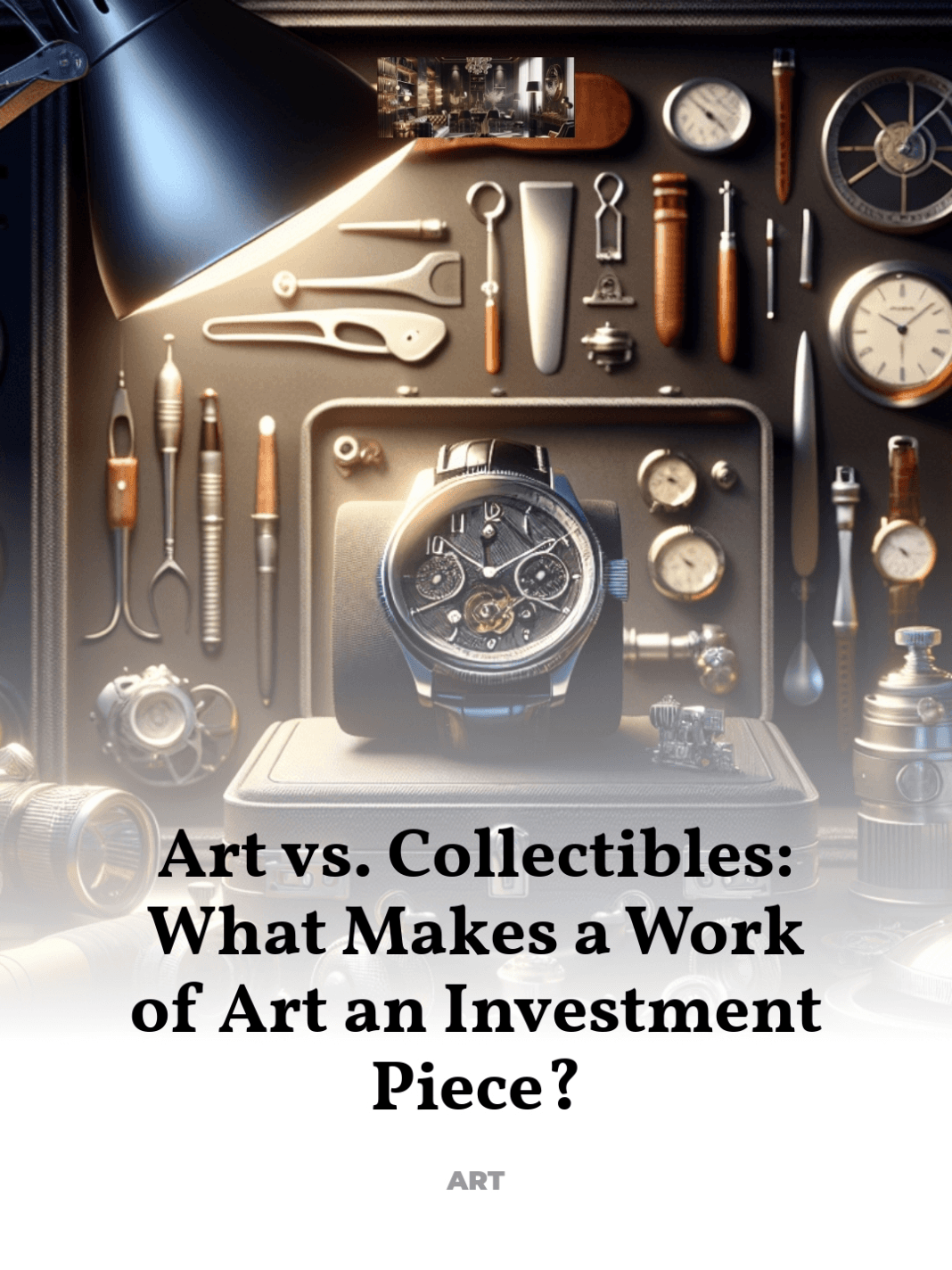How to distinguish between decorative art and high-value masterpieces
Discerning the line between mere decoration and a masterpiece is an art in itself. For enthusiasts of luxury, craftsmanship, and heritage, understanding what elevates an object from being just visually pleasing to becoming a valuable investment piece and collectible is essential.
- Defining Art and Collectibles
- Historical and Cultural Value
- Craftsmanship and Artist Legacy
- Current Market Trends in Art Collecting
- Case Studies: Masterpieces as Investment Pieces
- Navigating the Complex World of Art Investments
Defining Art and Collectibles
Understanding the distinction between art and collectibles is pivotal. While all art can be considered collectible, not all collectibles qualify as art. Art is typically defined by its ability to provoke thought, convey emotions, and possess aesthetic value, often created by individuals recognized for their artistic skills. Collectibles, on the other hand, can include a wide range of items like vintage cars, stamps, or furniture, valued more for their rarity and historical significance than their aesthetic appeal.
Criteria for Art as an Investment
- Historical significance: The piece’s role or influence in art movements or cultural shifts.
- Rarity: Limited availability or unique features that set it apart from other works.
- Condition: Preservation quality, with minimal restoration or alteration.
- Provenance: Well-documented history of the piece’s ownership and authenticity.
Historical and Cultural Value
The historical and cultural context of a piece significantly influences its status as an investment. Art that has played a role in defining a cultural or historical period stands out. For instance, works by Leonardo da Vinci or Pablo Picasso are prized not just for their aesthetic appeal but for their revolutionary impact on art history.
Impact of Cultural Heritage
Art that embodies or challenges cultural norms holds particular significance. For example, the works of Frida Kahlo reflect personal and cultural identity struggles, resonating deeply on both personal and societal levels, thereby enhancing their collectible value.
Craftsmanship and Artist Legacy
The technical skill and innovation demonstrated in a piece play a crucial role in its valuation as an art investment. Masterpieces are often the result of extraordinary craftsmanship combined with innovative techniques that set new standards in the art world.
Examining Artist Legacy
The reputation and historical importance of the artist contribute significantly. Artists who have a lasting influence on their field, such as Michelangelo or Rembrandt, are often considered safe bets for art investors.
Current Market Trends in Art Collecting
Staying informed about the latest trends in the art market is crucial for collectors. Currently, there is a growing interest in contemporary art, particularly works that address themes of technology, identity, and global politics.
Emerging Artists and Genres
Investing in emerging artists or genres can be risky but rewarding. Pieces that capture the zeitgeist or push artistic boundaries are often later recognized as culturally and financially valuable.
Case Studies: Masterpieces as Investment Pieces
Examining specific examples can provide insights into why certain artworks are considered valuable investments. For instance, Van Gogh’s “Starry Night” continues to captivate with its emotional depth and innovative brushwork, qualities that have cemented its high valuation.
Detailed Analysis of Iconic Works
Another example is Andy Warhol’s “Marilyn Diptych”, which combines celebrity culture with unique stylistic techniques, reflecting major themes of its era and contributing to its status as a collectible.
Navigating the Complex World of Art Investments
While the allure of art as an investment is undeniable, it requires a deep understanding of both the art and the market. Collectors must consider historical significance, craftsmanship, artist legacy, and current market trends when making purchasing decisions.
For further exploration into the world of art investments, consider visiting authoritative sources such as the Metropolitan Museum of Art’s online archives.
By appreciating the intricate blend of artistry, history, and market dynamics, collectors can better navigate the complex terrain of art investments, ensuring their collections are both personally meaningful and culturally significant.



